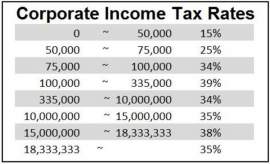
What are Refund Anticipation Loans?

Under the American system of taxation, taxpayers have a commonly available means for securing a tax refund advance in order to make advantage of this tool for the alleviation of debt or other required purposes before they have received the amount from the IRS. Various services exist for providing the tax refund load option to people who have applied for a tax refund from the government.
The two components required by the process of gaining a tax refund advance consist of the professionals who prepare the tax filing as a whole and the bank which provides the actual tax refund loan. The tax refund loan option is noted for being unusual in that it is made only a short time before the actual funds are secured, in comparison to which the costs imposed by securing a tax refund advance are comparatively high.
The tax preparer through which a tax refund loan may be secured will commonly require payment of a fee, which by IRS rules must not be made in accordance with the expected size of a refund as may be due to the taxpayer. Generally, then, this fee will be charged at an amount of about $34, while the creation of the separately made and addressed application for the tax refund loan is also likely to incur a small fee.
Based on the information this service has received from the taxpayer, it will submit it to the IRS to gain confirmation that the tax refund application it received was free of obvious errors, that the taxpayer was in good stead with the agency, and that the application was thus likely to be passed. The service will thus make the tax refund advance to the taxpayer, with a certain amount withdrawn, the whole process generally requiring not much more than a period of 24 hours.
Critics have questioned whether the decision to allow tax preparation services and banks to offer this service is in the best interests of American taxpayers. One point of criticism consists of the disproportionate of taxpayers with lower incomes to use the service in comparison to the high rates charged.
The availability of the tax refund advance option is enabled in the American system of taxation by the electronically enabled services which are now used for the system. Drawing on these capabilities, the IRS introduced the practice of offering a tax refund loan for the first time in the 1980s. As a practice, the tax refund advance continued to be popular with American taxpayers for some time after it was first created.
As an example of the significance which the tax refund loan once held as part of the American system of taxation, it has been observed that 2004 saw some twelve million such loans being issued to Americans. The popularity of the tax refund advance option was diminished, however, by the introduction of electronic tax filing, which cut down the total time required and thus the time for which taxpayers would have to wait for their tax refund.
NEXT: What is the IRS Refund Schedule?




















